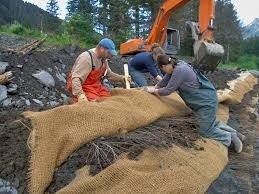 Our efforts on the Shasta River are paying off: this year’s fish run was the second largest since 2001, and the fourth largest since 1978. We’ve been working on the river-a tributary to the Klamath River-since 1998. This year’s fish run (as of October) was about 13,000, while the average is closer to 6,000.
Our efforts on the Shasta River are paying off: this year’s fish run was the second largest since 2001, and the fourth largest since 1978. We’ve been working on the river-a tributary to the Klamath River-since 1998. This year’s fish run (as of October) was about 13,000, while the average is closer to 6,000.
The Shasta River was once the largest salmon-producing tributary to the Klamath thanks to its relatively cold temperatures and constant flow of water. But decreased water quality and quantity (due to multiple water diversions) resulted in degraded habitat conditions in the stream.
 In 2009, we awarded The Nature Conservancy funding through the Recovery Act to build fences to keep cattle out of the river. This prevented them from eroding the banks and eating all of the plants that provide shade and cool the river. We also planted 34 acres of vegetation and improved irrigation practices. Within a year, these measures had significantly reduced water temperatures and improved fish habitat.
In 2009, we awarded The Nature Conservancy funding through the Recovery Act to build fences to keep cattle out of the river. This prevented them from eroding the banks and eating all of the plants that provide shade and cool the river. We also planted 34 acres of vegetation and improved irrigation practices. Within a year, these measures had significantly reduced water temperatures and improved fish habitat.
We recently implemented another project, which will balance the agricultural demand for water with the needs of Pacific salmon. We worked with landowners to voluntarily lease or acquire their water rights during strategic times of the year, allowing for optimal water flows for migrating salmon. This was particularly crucial this year during California’s extreme drought.
Our ongoing efforts have helped restore fish habitat on the Shasta River. Ultimately, they could help revive California’s commercial, recreational, and tribal salmon fisheries as an important source of wild, locally caught salmon.
